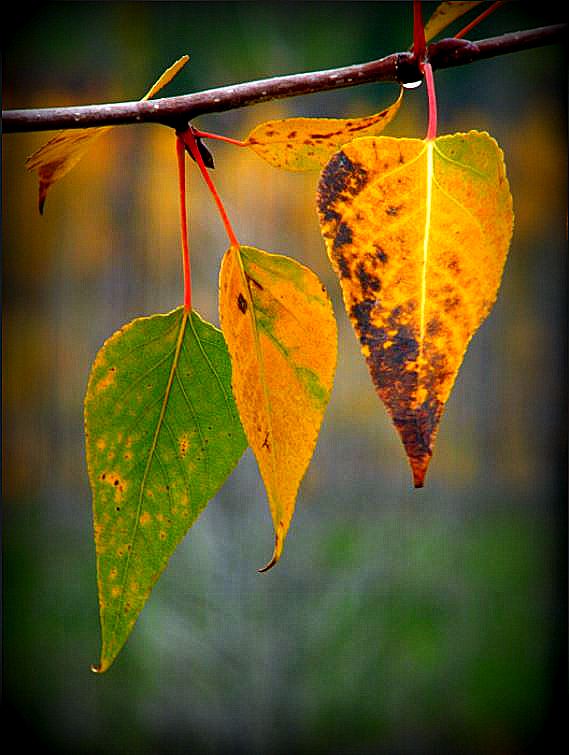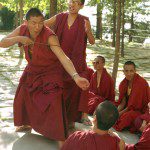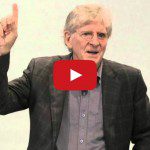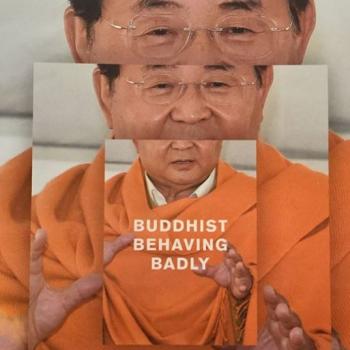
Thich Nhat Hanh is revered as one of Buddhism’s greatest living masters: a poet, a translator, a peace activist, and most importantly to most: a teacher of profound depth and meaning to tens of thousands of followers around the world. It has been over a month since our last health update, and given the trajectory over the last 11 month, it seems that cautious optimism is still warranted.
Yet, even as his health continues to improve, his followers have been faced with the question of continuing his activities in his absence. While students and supporters hope for a full recovery and further teaching and activity in this body, there is a profound teaching of acceptance and non-clinging to be found in his works and the traditions he draws from.
In his very short commentary on the Heart Sutra, the Heart of Understanding, one chapter is called “Happy Continuation.” Here, Thich Nhat Hanh comments on the line from the Heart Sutra in which the Bodhisattva Avalokita says:
“Hear, Shariputra, all dharmas are marked with emptiness. They are neither produced nor destroyed.”
Reflecting on this, Thich Nhat Hanh writes:
One autumn day, I was in a park, absorbed in the contemplation of a very small but beautiful leaf, in the shape of a heart. Its color was almost red, and it was barely hanging on the branch, nearly ready to fall down. I spent a long time with it, and I asked the leaf a lot of questions …
I asked the leaf whether it was scared because it was autumn and the other leaves were falling. The leaf told me, “No. During the whole spring and summer I was very alive. I worked hard and helped nourish the tree, and much of me is in the tree. Please do not say that I am just this form, because the form of leaf is only a tiny part of me. I am the whole tree. I know that I am already inside the tree, and when I go back to the soil, I will continue to nourish the tree. That’s why I do not worry. As I leave this branch and float to the ground, I will wave to the tree and tell her, ‘I will see you again very soon.'”
Suddenly I saw a kind of wisdom very much like the wisdom contained in the Heart Sutra. You have to see life. You should not say, life of the leaf, you should only speak of life in the leaf and life in the tree. My life is just Life, and you can see it in me and in the tree. That day there was a wind blowing and, after a while, I saw the leaf leave the branch and float down to the soil, dancing joyfully, because as it floated it saw itself already there in the tree. It was so happy. I bowed my head, and I knew that we have a lot to learn from the leaf…
In my conversations with students of Thay (as he is called), this mixture of joy and acceptance always comes out, along with the very human wish that he may continue (in this body) and the twinge of sadness at the thought of his absence. They do not hide these feelings or feel shame for them. These teachings, especially those on emptiness, are held to be the literal “perfection” of the Buddha’s wisdom, an extraordinary ideal to be fully grasped only at the final stages of one’s spiritual development.
This wisdom is transmitted in pithy, poetic lines, as in the Heart Sutra, and illuminated with beautiful, earthy, and graspable language as in this story from Thay. It is also found in the philosophy of a succession of great Buddhist thinkers, starting with Nagarjuna. All of these are the myriad ways that a Truth (Dhamma) can be passed down, or gestured toward, by a teacher to a disciple. And the teachings must be felt as much as they are cognized, overcoming the duality of emotion vs reason we tend to be indoctrinated with so heavily in the West.
Whether Thay’s continuation in this body ceases in a matter of days or many years from now, his continuation in his students and teachings cannot be measured.
Tomorrow, I will continue to be. But you will have to be very attentive to see me. I will be a flower, or a leaf. I will be in these forms and I will say hello to you. If you are attentive enough, you will recognize me, and you may greet me. I will be very happy.












